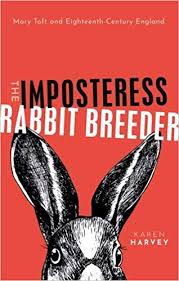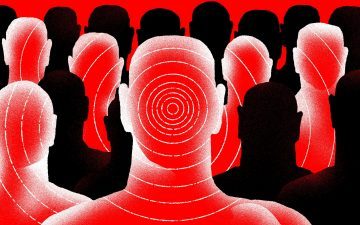Category: Recommended Reading
Elizabeth Hardwick, Robert Lowell, and The Dolphin Letters
Meg Schoerke at The Hudson Review:
 The Dolphin won the Pulitzer Prize, Lowell’s second, in 1974. It also sparked controversy, due not only to Lowell’s portrayal of Hardwick as the aggrieved, abandoned wife—the “Lizzie character,” as he called her—whom he unflatteringly contrasts throughout to the fecund Caroline character, variously imagined as dolphin, mermaid, and baby killer whale—but also due to his appropriation, and changing, of Hardwick’s letters into sonnets that voice the wife’s side of the story, whether as letter-poems or admonitory echoes that surface in the Lowell character’s head. The awkwardness here of referring to real people as characters reflects the inherent problem with Lowell’s book: the line between fact and fiction is stretched so thin—even to the point of “character” names corresponding to those of their real-life counterparts—that readers are led to assume that the book chronicles reality, not fiction, despite Lowell’s equivocal disclaimer in the final, title poem that the book is “half fiction.”
The Dolphin won the Pulitzer Prize, Lowell’s second, in 1974. It also sparked controversy, due not only to Lowell’s portrayal of Hardwick as the aggrieved, abandoned wife—the “Lizzie character,” as he called her—whom he unflatteringly contrasts throughout to the fecund Caroline character, variously imagined as dolphin, mermaid, and baby killer whale—but also due to his appropriation, and changing, of Hardwick’s letters into sonnets that voice the wife’s side of the story, whether as letter-poems or admonitory echoes that surface in the Lowell character’s head. The awkwardness here of referring to real people as characters reflects the inherent problem with Lowell’s book: the line between fact and fiction is stretched so thin—even to the point of “character” names corresponding to those of their real-life counterparts—that readers are led to assume that the book chronicles reality, not fiction, despite Lowell’s equivocal disclaimer in the final, title poem that the book is “half fiction.”
more here.
Seeing Shakespeare with Ninagawa
Moeko Fujii at The Point:
 Ninagawa would’ve hated being called my favorite self-Orientalist. He would’ve thrown an ashtray at me, if the stuff of legends is true. He did not brook critiques that hinted at his dabbling in the “Japanesque.” Ninagawa’s audience—his only audience, he maintained—was the Japanese, his aim “to produce a Shakespeare play that could be understood by ordinary people.” He said this with an air of finality, as if slamming a door shut, but I always wanted to jam a foot in before he did. I needed definitions—for “ordinary” and “Japanese”—his full-throated definitions, though he’d died before giving them. Because seeing his art had taught generations to stretch the bounds of those two words beyond imagining. No, here’s a more honest, selfish reason than that: I needed to know whether he was speaking to people who found them both comforting and troubling. I needed to know whether he was speaking to people like me.
Ninagawa would’ve hated being called my favorite self-Orientalist. He would’ve thrown an ashtray at me, if the stuff of legends is true. He did not brook critiques that hinted at his dabbling in the “Japanesque.” Ninagawa’s audience—his only audience, he maintained—was the Japanese, his aim “to produce a Shakespeare play that could be understood by ordinary people.” He said this with an air of finality, as if slamming a door shut, but I always wanted to jam a foot in before he did. I needed definitions—for “ordinary” and “Japanese”—his full-throated definitions, though he’d died before giving them. Because seeing his art had taught generations to stretch the bounds of those two words beyond imagining. No, here’s a more honest, selfish reason than that: I needed to know whether he was speaking to people who found them both comforting and troubling. I needed to know whether he was speaking to people like me.
more here.
The Imposteress Rabbit Breeder
Norma Clarke at Literary Review:
 In October 1726 some ‘strange, but well attested’ news emerged from Godalming near Guildford. An ‘eminent’ surgeon, a male midwife, had delivered a poor woman called Mary Toft not of a child but of rabbits – a number of them, over a period of several weeks. None of the rabbits, not even a ‘perfect’ one, survived their birth, but the surgeon bottled them up and declared his intention to present them as specimens to the Royal Society. A report in the British Gazeteer furnished readers with the woman’s explanation. Some months earlier she and other women working in a field had chased a rabbit and failed to catch it. She was pregnant at the time and suffered a miscarriage. Thereafter, she pined to eat rabbit and had been unable to avoid thinking of rabbits.
In October 1726 some ‘strange, but well attested’ news emerged from Godalming near Guildford. An ‘eminent’ surgeon, a male midwife, had delivered a poor woman called Mary Toft not of a child but of rabbits – a number of them, over a period of several weeks. None of the rabbits, not even a ‘perfect’ one, survived their birth, but the surgeon bottled them up and declared his intention to present them as specimens to the Royal Society. A report in the British Gazeteer furnished readers with the woman’s explanation. Some months earlier she and other women working in a field had chased a rabbit and failed to catch it. She was pregnant at the time and suffered a miscarriage. Thereafter, she pined to eat rabbit and had been unable to avoid thinking of rabbits.
more here.
The complicated legacy of Minstrel shows
John Szwed in Delancey Place:
 Minstrel shows, most often with white entertainers performing in blackface, were a highly racist phenomenon that were a pervasive form of entertainment in America for over 80 years through the 1800s and early 1900s. Yet as complicated and fundamentally offensive as they were, it was part of what led to a break with a purely European music tradition: “African Americans were leading the way in breaking with European musical tradition, and, strange as it might seem, this break had been anticipated, and maybe even urged, by the minstrel show, the first form of musical theater to reach the whole country. Its history is much longer than the eighty or so years that it is said to have lasted in the United States; its legacy is far more complicated than just a matter of white people copying black people, and even today questions about the sources of this music and its influence remain unsettled.
Minstrel shows, most often with white entertainers performing in blackface, were a highly racist phenomenon that were a pervasive form of entertainment in America for over 80 years through the 1800s and early 1900s. Yet as complicated and fundamentally offensive as they were, it was part of what led to a break with a purely European music tradition: “African Americans were leading the way in breaking with European musical tradition, and, strange as it might seem, this break had been anticipated, and maybe even urged, by the minstrel show, the first form of musical theater to reach the whole country. Its history is much longer than the eighty or so years that it is said to have lasted in the United States; its legacy is far more complicated than just a matter of white people copying black people, and even today questions about the sources of this music and its influence remain unsettled.
“Some minstrels were black, and some of those we now consider white performers were then categorized as nonwhite in one way or another. A few of the white performers who wore blackface, such as Al Jolson or Libby Holman, were very popular among people of color. Minstrelsy reached a much wider audience than just the United States, and it took on different meanings in other countries. In South Africa minstrel performances in blackface have been popular for over a century among nonwhite Africans in Cape Town during Coon Carnival in January of each year. Adolf Hitler’s mistress Eva Braun posed in blackface for professional entertainers’ photos in imitation of her favorite performer, Al Jolson, who was Jewish. Billie Holiday, like many other black performers of her time, at least once had to darken her skin so as not to look too white when appearing with a band of black musicians before a white audience.
More here. (Note: Throughout February, at least one post will honor The Black History Month. This year’s theme is “African Americans and the Vote.” Readers are encouraged to send in their suggestions)
Friday Poem
The Letters of the Dead
We read the letters of the dead like helpless gods,
but gods, nonetheless, since we know the dates that follow.
We know what debts will never be repaid.
Which widows will remarry with the corpse still warm.
Poor dead, blindfolded dead,
gullible, fallible, pathetically prudent.
We see the faces people make behind their backs.
We catch the sound of wills being ripped to shreds.
The dead sit before us comically, as if on buttered bread,
or frantically pursue the hats blown from their heads.
Their bad taste, Napoleon, steam, electricity,
their fatal remedies for curable diseases,
their foolish apocalypse according to St. John,
their counterfeit heaven on earth according to Jean Jacques.
We watch the pawns on their chessboards in silence,
even though we see them three squares later.
Everything the dead predicted has turned out completely different.
or a little bit different—which is to say completely different.
The most fervent of them gaze confidently into our eyes:
their calculations tell them that they’ll find perfection there.
by Wistlawa Szymborska
from View with a Grain of Sand
Harcourt Brace, 1995
Thursday, February 20, 2020
How Hindu supremacists are tearing India apart
Samanth Subramanian in The Guardian:
 Soon after the violence began, on 5 January, Aamir was standing outside a residence hall in Jawaharlal Nehru University in south Delhi. Aamir, a PhD student, is Muslim, and he asked to be identified only by his first name. He had come to return a book to a classmate when he saw 50 or 60 people approaching the building. They carried metal rods, cricket bats and rocks. One swung a sledgehammer. They were yelling slogans: “Shoot the traitors to the nation!” was a common one. Later, Aamir learned that they had spent the previous half-hour assaulting a gathering of teachers and students down the road. Their faces were masked, but some were still recognisable as members of a Hindu nationalist student group that has become increasingly powerful over the past few years.
Soon after the violence began, on 5 January, Aamir was standing outside a residence hall in Jawaharlal Nehru University in south Delhi. Aamir, a PhD student, is Muslim, and he asked to be identified only by his first name. He had come to return a book to a classmate when he saw 50 or 60 people approaching the building. They carried metal rods, cricket bats and rocks. One swung a sledgehammer. They were yelling slogans: “Shoot the traitors to the nation!” was a common one. Later, Aamir learned that they had spent the previous half-hour assaulting a gathering of teachers and students down the road. Their faces were masked, but some were still recognisable as members of a Hindu nationalist student group that has become increasingly powerful over the past few years.
The group, the Akhil Bharatiya Vidya Parishad (ABVP), is the youth wing of the Rashtriya Swayamsevak Sangh (RSS). Founded 94 years ago by men who were besotted with Mussolini’s fascists, the RSS is the holding company of Hindu supremacism: of Hindutva, as it’s called. Given its role and its size, it is difficult to find an analogue for the RSS anywhere in the world. In nearly every faith, the source of conservative theology is its hierarchical, centrally organised clergy; that theology is recast into a project of religious statecraft elsewhere, by other parties. Hinduism, though, has no principal church, no single pontiff, nobody to ordain or rule. The RSS has appointed itself as both the arbiter of theological meaning and the architect of a Hindu nation-state. It has at least 4 million volunteers, who swear oaths of allegiance and take part in quasi-military drills.
More here.
John Allen Paulos: We’re Reading the Coronavirus Numbers Wrong
John Allen Paulos in the New York Times:
 Numbers have a certain mystique: They seem precise, exact, sometimes even beyond doubt. But outside the field of pure mathematics, this reputation rarely is deserved. And when it comes to the coronavirus epidemic, buying into that can be downright dangerous.
Numbers have a certain mystique: They seem precise, exact, sometimes even beyond doubt. But outside the field of pure mathematics, this reputation rarely is deserved. And when it comes to the coronavirus epidemic, buying into that can be downright dangerous.
Naturally, everyone wants to know how deadly COVID-19, the disease caused by the new coronavirus, is. The technical term for that is the case fatality rate — which is, put simply, the number of people who have died from the disease (D) divided by the total number of people who were infected with it (I), or D/I. As of Tuesday morning, at least 1,873 people were thought to have died from the disease worldwide and 72,869 people to have been infected.
But those figures may not mean what you think.
The number of deaths (D) seems like it should be easy enough to determine: After all, dead is dead. And yet ascribing a cause of death can be tricky.
More here.
Ben Bernanke, Timothy Geithner, and Henry Paulson still have not reckoned with the failures of neoliberal planning in the wake of the financial crisis
Reed Hundt in the Boston Review:
 More than a decade after the financial crises of 2008, the shortcomings of the government’s response have become painfully clear.
More than a decade after the financial crises of 2008, the shortcomings of the government’s response have become painfully clear.
This clarity has unfortunately not been aided by the extensive writings of the three people George W. Bush and Barack Obama charged with putting the fire out: Henry Paulson (Bush’s Treasury secretary), Timothy Geithner (Bush’s New York Fed CEO turned Obama’s Treasury secretary), and Ben Bernanke (chairman of the Federal Reserve for both Bush and Obama). In no other U.S. financial crisis did two successive administrations of opposing parties work together so harmoniously, aiming toward the same goal with similar means. From the moment of the Lehman Brothers bankruptcy on September 15, 2008, to Obama’s inauguration on January 20, 2009, the two major parties—one of whose leaders won office on the slogan of hope and change—sought essentially the same legislation, backed the same actions by the executive branch, and even relied on the same person, Geithner, to restore Wall Street’s primacy in shaping investment and wealth allocation.
More here.
Escaping Paternalism: Rationality, Behavioral Economics, and Public Policy
A talk by Mario J. Rizzo, introduction by Mark Blyth:
Liking Bad Movies
Phil Christman at The Hedgehog Review:
 We bad-movie watchers have our own anticriteria, the sorts of badness we prefer. Some of us use the term “bad movies” to mean, simply, films that emerge from a supposedly lowbrow genre, or films that are stylized in the manner we tend to label “camp.” (Road House from 1989 is this kind of bad movie, and is very good at being one.) Some of us prefer movies that are exploitative and tacky but, in a Nietzschean way, supposedly more alive than respectable ones. Renata Adler referred to the cult around such movies as “the angry trash claimers,”1 a term by which she probably intended to indict Pauline Kael, whose “Trash, Art, and the Movies” could serve as a manifesto for this sort of criticism.2 The rock critic Lester Bangs, in an endearing essay about Ray Dennis Steckler’s delirious 1963 horror film The Incredibly Strange Creatures Who Stopped Living and Became Mixed-Up Zombies, practices Angry Trash Reclamation, arguing that the film’s apparent innocence of good taste gives it a kind of “lunar purity.”
We bad-movie watchers have our own anticriteria, the sorts of badness we prefer. Some of us use the term “bad movies” to mean, simply, films that emerge from a supposedly lowbrow genre, or films that are stylized in the manner we tend to label “camp.” (Road House from 1989 is this kind of bad movie, and is very good at being one.) Some of us prefer movies that are exploitative and tacky but, in a Nietzschean way, supposedly more alive than respectable ones. Renata Adler referred to the cult around such movies as “the angry trash claimers,”1 a term by which she probably intended to indict Pauline Kael, whose “Trash, Art, and the Movies” could serve as a manifesto for this sort of criticism.2 The rock critic Lester Bangs, in an endearing essay about Ray Dennis Steckler’s delirious 1963 horror film The Incredibly Strange Creatures Who Stopped Living and Became Mixed-Up Zombies, practices Angry Trash Reclamation, arguing that the film’s apparent innocence of good taste gives it a kind of “lunar purity.”
more here.
Russia’s Dr. Seuss
Anthony Madrid at the Paris Review:
 Russia had a Dr. Seuss. Same deal as ours, except his hot decade wasn’t the fifties; it was the twenties. There’s a lot to be said here.
Russia had a Dr. Seuss. Same deal as ours, except his hot decade wasn’t the fifties; it was the twenties. There’s a lot to be said here.
Name: Kornei Chukovsky. Dates: 1882 to 1969. Number of supremo-supremo classic children’s books to his credit: ten or twelve. His stuff is a lot like Green Eggs and Ham: about that long; rhymes bouncing around like popcorn; no real point in sight. (Of course, like with everything else, you can carry whatever point you like into his books and then pretend you found it there. It’s like cops planting weed in people’s cars.)
Chukovsky’s backstory is pleasant. He was a young father; his son was sick. I think he had dysentery, I’m not sure. Somehow, everyone thought the family doctor was the only one would could be consulted, so Chukovsky wound up on a train in the middle of the night with that poor kid, age like four or something, sick and moaning.
more here.
Female Poets in the Persian Language
Joobin Bekhrad at the TLS:

The Persian language does not recognize gender, but it is hard to deny that history has favoured male Persian-language poets over their female counterparts. Since the revival of the language in the tenth century after its suppression by the Arabs, men have dominated the corpus of Persian literature; so much so, in fact, that a lay reader or enthusiast would be justified in questioning whether Khayyam, Sa’di and Hafez, among many others, even had contemporaries of the opposite sex. While it is true that, with the exception of a handful of twentieth-century poets, female Persian-language poets can at best be said to have written verse in the shadows of men, they have indeed existed – as this revelatory new compendium vividly shows.
Translated by Dick Davis, a renowned scholar of Persian literature and a poet in his own right, The Mirror of My Heart examines the work of over eighty female Persian-language poets from the past thousand years.
more here.
Thursday Poem
The Man in the Glass
When you get what you want in your struggle for pelf
And the world makes you king for a day
Just go to the mirror and look at yourself
And see what that man has to say.
For it isn’t your father, or mother, or wife
Whose judgment upon you must pass
The fellow whose verdict counts most in your life
Is the one staring back from the glass.
He’s the fellow to please – never mind all the rest
For he’s with you, clear to the end
And you’ve passed your most difficult, dangerous test
If the man in the glass is your friend.
Some people may call you a straight-shooting chum,
And call you a wonderful guy,
But the man in the glass says you’re only a bum
If you can’t look him straight in the eye.
You may fool the whole world down the pathway of life
And get pats on the back as you pass
But your final reward will be heartache and strife
If you’ve cheated the man in the glass.
by Peter Dale Wimbrow
__________________________________
Pelf: money or wealth, especially when regarded with contempt or acquired by reprehensible means
The hunt for a healthy microbiome
Michael Eisenstein in Nature:
 What does a healthy forest look like? A seemingly thriving, verdant wilderness can conceal signs of pollution, disease or invasive species. Only an ecologist can spot problems that could jeopardize the long-term well-being of the entire ecosystem. Microbiome researchers grapple with the same problem. Disruptions to the community of microbes living in the human gut can contribute to the risk and severity of a host of medical conditions. Accordingly, many scientists have become accomplished bacterial naturalists, labouring to catalogue the startling diversity of these commensal communities. Some 500–1,000 bacterial species reside in each person’s intestinal tract, alongside an undetermined number of viruses, fungi and other microbes. Rapid advances in DNA sequencing technology have accelerated the identification of these bacteria, allowing researchers to create ‘field guides’ to the species in the human gut. “We’re starting to get a feeling of who the players are,” says Jeroen Raes, a bioinformatician at VIB, a life-sciences institute in Ghent, Belgium. “But there is still considerable ‘dark matter’.”
What does a healthy forest look like? A seemingly thriving, verdant wilderness can conceal signs of pollution, disease or invasive species. Only an ecologist can spot problems that could jeopardize the long-term well-being of the entire ecosystem. Microbiome researchers grapple with the same problem. Disruptions to the community of microbes living in the human gut can contribute to the risk and severity of a host of medical conditions. Accordingly, many scientists have become accomplished bacterial naturalists, labouring to catalogue the startling diversity of these commensal communities. Some 500–1,000 bacterial species reside in each person’s intestinal tract, alongside an undetermined number of viruses, fungi and other microbes. Rapid advances in DNA sequencing technology have accelerated the identification of these bacteria, allowing researchers to create ‘field guides’ to the species in the human gut. “We’re starting to get a feeling of who the players are,” says Jeroen Raes, a bioinformatician at VIB, a life-sciences institute in Ghent, Belgium. “But there is still considerable ‘dark matter’.”
Currently, these field guides are of limited use in distinguishing a healthy microbiome from an unhealthy one. Part of the problem is the potentially vast differences between the microbiomes of apparently healthy people. These differences arise through a complex combination of environmental, genetic and lifestyle factors. This means that relatively subtle differences can have a disproportionate role in determining whether an individual is relatively healthy or at increased risk of developing disorders such as diabetes.
More here.
Henry Louis Gates Talks Reconstruction To Alt-Right, Trump And Voter Suppression
Gwendolyn Glenn in WFAE Radio:
 Henry Louis Gates, a renowned and award-winning filmmaker, author of two dozen books, a professor and director of African American studies at Harvard University, has written about race in America. He explores the Civil War, Reconstruction to Jim Crow, the civil rights movement and the state of race relations today. Gates spoke at UNC Charlotte Tuesday for the school’s 2019 Chancellor Speaker Series and at the uptown campus to school donors and city leaders. WFAE’s “All Things Considered” host, Gwendolyn Glenn, caught up with him to talk about race, voting, economics and other issues.
Henry Louis Gates, a renowned and award-winning filmmaker, author of two dozen books, a professor and director of African American studies at Harvard University, has written about race in America. He explores the Civil War, Reconstruction to Jim Crow, the civil rights movement and the state of race relations today. Gates spoke at UNC Charlotte Tuesday for the school’s 2019 Chancellor Speaker Series and at the uptown campus to school donors and city leaders. WFAE’s “All Things Considered” host, Gwendolyn Glenn, caught up with him to talk about race, voting, economics and other issues.
Gwendolyn Glenn: Let’s talk about the message that you want to leave people with. You’ll be talking with students, faculty from UNC Charlotte and also a lot of city leaders here in Charlotte. What’s the message you want to leave today?
Henry Louis Gates: It’s very important for people to understand the history of Reconstruction, the period following the Civil War and its rollback because it is a precursor to the period that we’re experiencing today. Between 1870 and 1877, 2,000 black men were elected to public office, including Chris Rock’s great-great-grandfather, who was elected to the House of Delegates in South Carolina. But within a few years, poof — all that disappeared.
Glenn: And I was going to ask you about that because you talk about that in your book and I think in an interview I heard you compare that roll back after Reconstruction to Jim Crow and on to what’s happening now with the Trump administration and that rollback.
Gates: Reconstruction was 12 years of unprecedented black freedom followed by an alt-right rollback. And we’re living through a period of eight years of a beautiful, brilliant, black family in the White House. A brilliant black president followed by an alt-right rollback. So the lesson of Reconstruction is that rights that we think are permanent, the right to vote, birthright citizenship, and the right of a woman to determine the fate of her own body. We think that these are inviolable. But they’re not they’re subject to the interpretation of the courts and sometimes the executive orders and that is the crisis that we’re facing today. So what happened in Reconstruction can happen again. The most important way, the most devastating way that Reconstruction was rolled back was through voter suppression.
More here. (Note: Throughout February, at least one post will honor The Black History Month. This year’s theme is “African Americans and the Vote.” Readers are encouraged to send in their suggestions)
Wednesday, February 19, 2020
Reading Sade in the Age of Epstein
Mitchell Abidor in the New York Review of Books:

The recent publication of two works by the Marquis de Sade enables us to see that sadism is not just “the impulse to cruel and violent treatment of the opposite sex, and the coloring of the idea of such acts with lustful feelings,” as Richard von Krafft-Ebing defined it in his 1886 Psychopathia Sexualis. Sadism, as it is depicted by Sade, is also, and perhaps primarily, the creation of a world in which the powerful and wealthy are able to lure the poor and powerless, hold them captive, and reduce their bodies and selfhoods to nothing.
In this, as some clear-sighted post–World War II writers have noted, Sade’s writing was, inter alia, a harbinger of fascism. Theodor Adorno and Max Horkheimer, for example, wrote that Sade “prefigures the organization, devoid of any substantial goals, which was to encompass the whole of life” under the totalitarianism that drove them from Germany. Reading Sade in the age of #MeToo and Jeffrey Epstein is an uncanny experience, for his novels are also a blueprint for the world of the sexual predators of today.
This winter brings the first complete English translation of Sade’s vast epistolary novel, Aline and Valcour, in a lavish, three-volume edition from Contra Mundum. The translation, by Jocelyne Geneviève Barque and John Galbraith Simmons, is a masterful one, allowing Sade’s prose to flow, neither assuming the language and rhythms of the eighteenth century nor interpolating anachronisms from English today.
More here.
Sean Carroll’s Mindscape Podcast: Suresh Naidu on Capitalism, Monopsony, and Inequality
Sean Carroll in Preposterous Universe:
 Nations generally want their economies to be rich, robust, and growing. But it’s also important to person to ensure that wealth doesn’t flow only to a few people, but rather that as many people as possible can enjoy the benefits of a healthy economy. As is well known, the best way to balance these interests is a contentious subject. On one side we might find free-market fundamentalists who want to let supply and demand set prices and keep government interference to a minimum, while on the other we might find enthusiasts for very strong government control over all aspects of the economy. Suresh Naidu is an economist who has delved deeply into how economic performance affects and is affected by other notable social factors, from democracy to revolution to slavery. We talk about these, as well as how concentrations of economic power in just a few hands — monopoly and its cousin, monopsony — can distort the best intentions of the free market.
Nations generally want their economies to be rich, robust, and growing. But it’s also important to person to ensure that wealth doesn’t flow only to a few people, but rather that as many people as possible can enjoy the benefits of a healthy economy. As is well known, the best way to balance these interests is a contentious subject. On one side we might find free-market fundamentalists who want to let supply and demand set prices and keep government interference to a minimum, while on the other we might find enthusiasts for very strong government control over all aspects of the economy. Suresh Naidu is an economist who has delved deeply into how economic performance affects and is affected by other notable social factors, from democracy to revolution to slavery. We talk about these, as well as how concentrations of economic power in just a few hands — monopoly and its cousin, monopsony — can distort the best intentions of the free market.
More here.
The Graveyard Talks Back: Arundhati Roy on Fiction in the Time of Fake News
Arundhati Roy in Lit Hub:
 Graveyards in India are, for the most part, Muslim graveyards, because Christians make up a miniscule part of the population, and, as you know, Hindus and most other communities cremate their dead. The Muslim graveyard, the kabristan, has always loomed large in the imagination and rhetoric of Hindu nationalists. “Mussalman ka ek hi sthan, kabristan ya Pakistan!”—Only one place for the Mussalman, the graveyard or Pakistan—is among the more frequent war cries of the murderous, sword-wielding militias and vigilante mobs that have overrun India’s streets.
Graveyards in India are, for the most part, Muslim graveyards, because Christians make up a miniscule part of the population, and, as you know, Hindus and most other communities cremate their dead. The Muslim graveyard, the kabristan, has always loomed large in the imagination and rhetoric of Hindu nationalists. “Mussalman ka ek hi sthan, kabristan ya Pakistan!”—Only one place for the Mussalman, the graveyard or Pakistan—is among the more frequent war cries of the murderous, sword-wielding militias and vigilante mobs that have overrun India’s streets.
As the Hindu right has taken almost complete control of the state, as well as non-state apparatuses, the increasingly blatant social and economic boycott of Muslims has pushed them further down the societal ladder and made them even more unwelcome in “secular” public spaces and housing colonies. For reasons of safety as well as necessity, in urban areas many Muslims, including the elite, are retreating into enclaves that are often hatefully referred to as “mini-Pakistans.” Now in life, as in death, segregation is becoming the rule.
More here.
